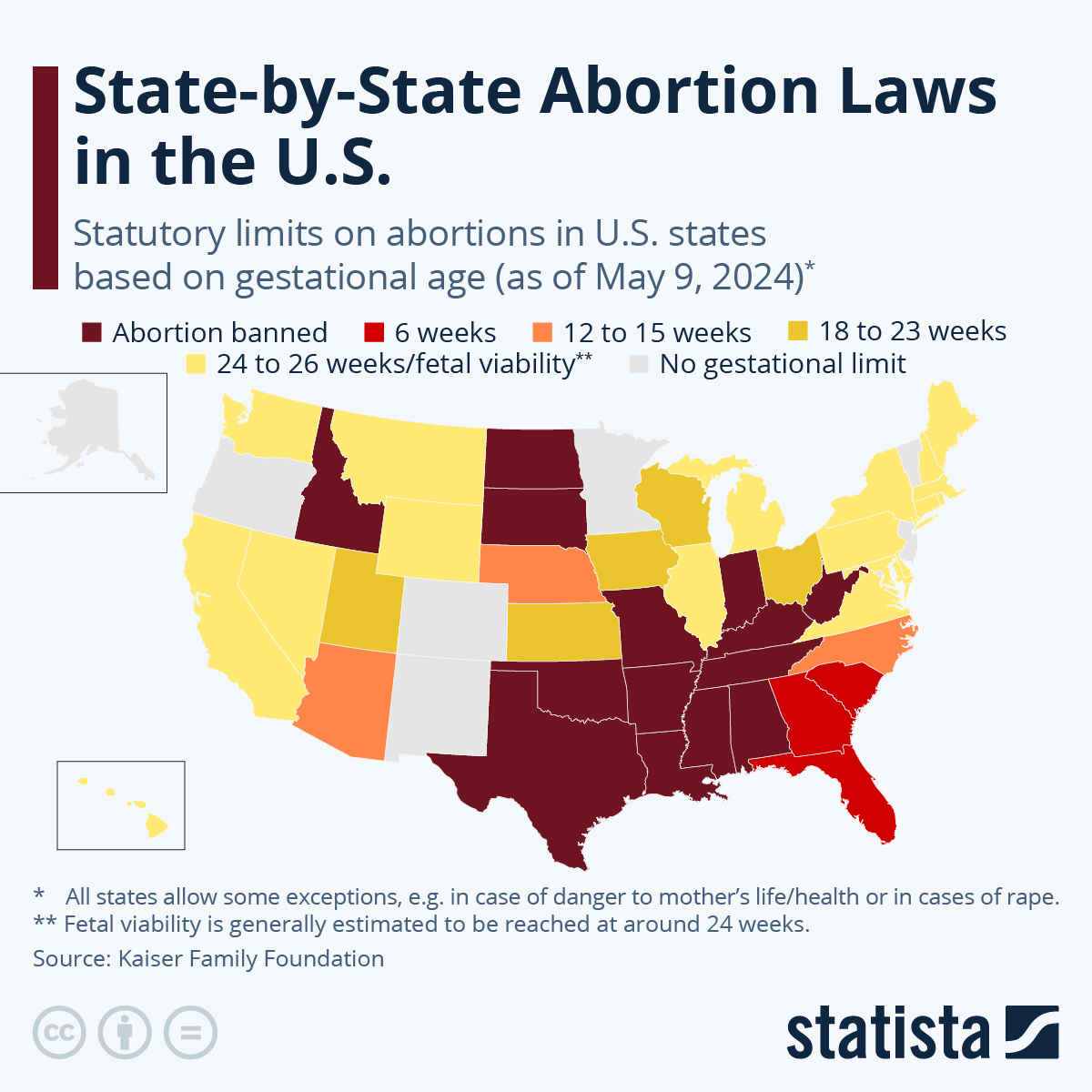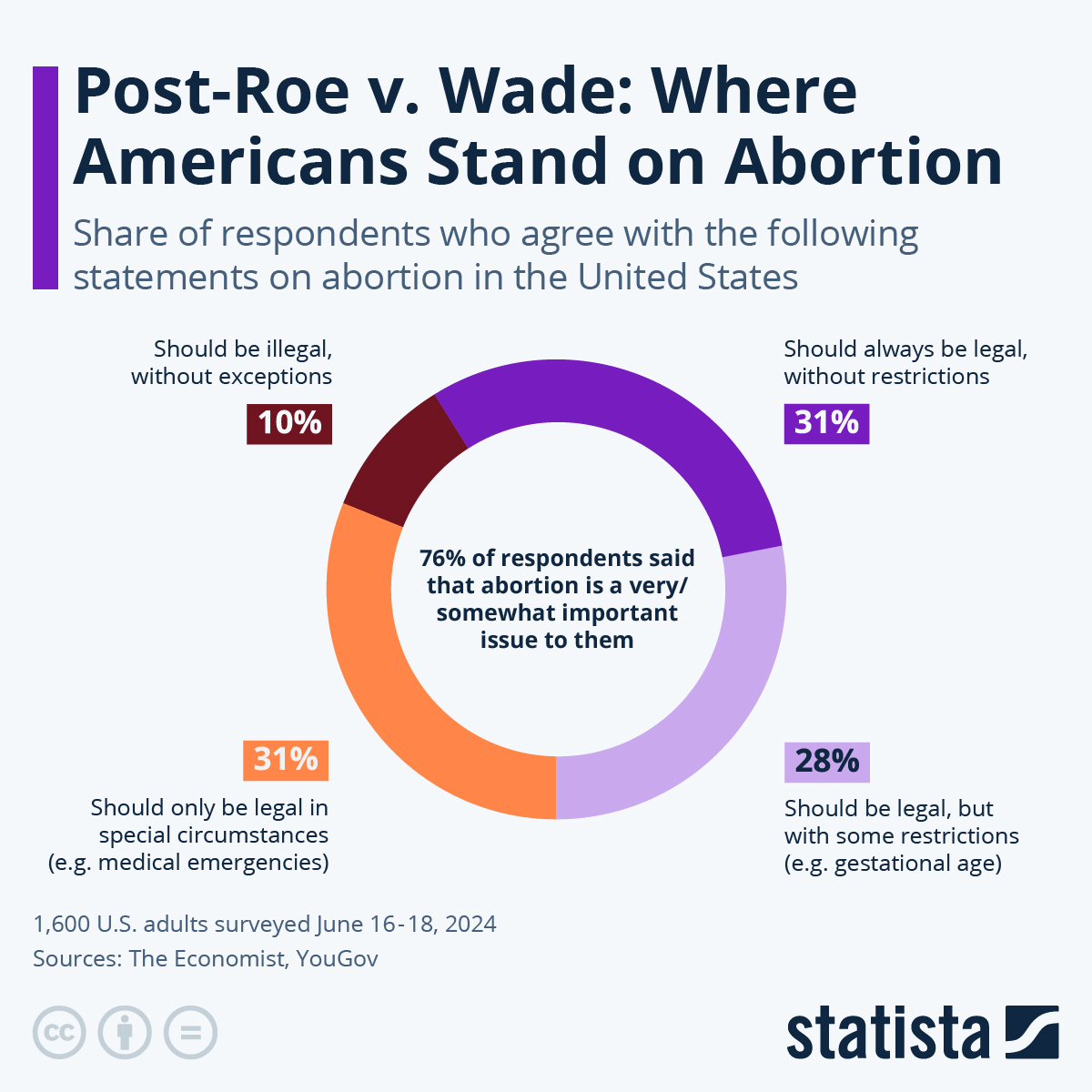
Last week saw the second anniversary of the U.S. Supreme Court’s decision to overturn Roe v. Wade, ending the constitutional right to abortion that had been established by the original ruling in 1973.
Having always been a controversial topic, the reversal of Roe v. Wade has reignited and intensified the debate around abortion in the United States, as it shifted the battleground to the state level, highlighting stark contrasts in public opinion across different regions.
As Statista's Katharina Buchholz shows in the map below, the abortion access map has been dramatically redrawn since the landmark decision was announced on June 24, 2022, creating a patchwork of different rules across the United States.
You will find more infographics at Statista
While many view abortion as a fundamental issue of women's rights and bodily autonomy, others consider it moral issue concerning the sanctity of life.
This clash of seemingly irreconcilable values has made abortion a contentious and polarizing issue for decades but even more so in today’s political landscape.
Statista's Felix Richter highlights this division in the chart below, based on a June 2024 survey conducted by YouGov on behalf of The Economist.
You will find more infographics at Statista
While 59 percent of respondents think that abortion should be legal, either with or without restrictions on gestational age, 31 percent of respondents think it should only be legal in special circumstances, for example when the life of the mother is in danger.
Another 10 percent even oppose such exceptions, saying that abortions should never be allowed.
Last week saw the second anniversary of the U.S. Supreme Court’s decision to overturn Roe v. Wade, ending the constitutional right to abortion that had been established by the original ruling in 1973.
Having always been a controversial topic, the reversal of Roe v. Wade has reignited and intensified the debate around abortion in the United States, as it shifted the battleground to the state level, highlighting stark contrasts in public opinion across different regions.
As Statista’s Katharina Buchholz shows in the map below, the abortion access map has been dramatically redrawn since the landmark decision was announced on June 24, 2022, creating a patchwork of different rules across the United States.
You will find more infographics at Statista
While many view abortion as a fundamental issue of women’s rights and bodily autonomy, others consider it moral issue concerning the sanctity of life.
This clash of seemingly irreconcilable values has made abortion a contentious and polarizing issue for decades but even more so in today’s political landscape.
Statista’s Felix Richter highlights this division in the chart below, based on a June 2024 survey conducted by YouGov on behalf of The Economist.
You will find more infographics at Statista
While 59 percent of respondents think that abortion should be legal, either with or without restrictions on gestational age, 31 percent of respondents think it should only be legal in special circumstances, for example when the life of the mother is in danger.
Another 10 percent even oppose such exceptions, saying that abortions should never be allowed.
Loading…






